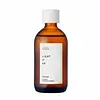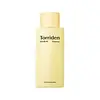What's inside
What's inside
 Key Ingredients
Key Ingredients

 Benefits
Benefits

 Concerns
Concerns

No concerns
 Ingredients Side-by-side
Ingredients Side-by-side

Water
Skin ConditioningEpimedium Grandiflorum Flower/Leaf/Stem Extract 19%
Skin ConditioningButylene Glycol
HumectantPentylene Glycol
Skin ConditioningGlycerin 6%
HumectantBrassica Oleracea Italica Extract 4%
AstringentRosa Damascena Flower Water 3%
MaskingAscorbyl Glucoside
AntioxidantArginine
MaskingCeramide NP
Skin ConditioningSodium Hyaluronate
HumectantHydrolyzed Hyaluronic Acid
HumectantHyaluronic Acid
HumectantPolyglutamic Acid
Skin ConditioningXanthan Gum
EmulsifyingAdenosine
Skin ConditioningDecyl Glucoside
CleansingPolyglyceryl-10 Laurate
Skin ConditioningCaprylic/Capric Triglyceride
MaskingSodium Phytate
Hydrogenated Lecithin
EmulsifyingCaprylyl Glycol
EmollientPolyglyceryl-10 Stearate
Skin ConditioningWater, Epimedium Grandiflorum Flower/Leaf/Stem Extract 19%, Butylene Glycol, Pentylene Glycol, Glycerin 6%, Brassica Oleracea Italica Extract 4%, Rosa Damascena Flower Water 3%, Ascorbyl Glucoside, Arginine, Ceramide NP, Sodium Hyaluronate, Hydrolyzed Hyaluronic Acid, Hyaluronic Acid, Polyglutamic Acid, Xanthan Gum, Adenosine, Decyl Glucoside, Polyglyceryl-10 Laurate, Caprylic/Capric Triglyceride, Sodium Phytate, Hydrogenated Lecithin, Caprylyl Glycol, Polyglyceryl-10 Stearate
Water
Skin ConditioningGlycerin
HumectantButylene Glycol
Humectant1,2-Hexanediol
Skin ConditioningCaprylic/Capric Triglyceride
MaskingPanthenol
Skin ConditioningCeramide NP
Skin ConditioningCeramide Ns
Skin ConditioningCeramide As
Skin ConditioningCeramide EOP
Skin ConditioningCeramide AP
Skin ConditioningChamomilla Recutita Leaf Extract
MaskingCamellia Sinensis Leaf Extract
AntimicrobialThymus Vulgaris Extract
PerfumingMentha Suaveolens Leaf Extract
AstringentAllantoin
Skin ConditioningSodium Hyaluronate
HumectantTrehalose
HumectantSucrose
HumectantCholesterol
EmollientGlycereth-26
HumectantC14-22 Alcohols
Emulsion StabilisingC12-20 Alkyl Glucoside
EmulsifyingPvm/Ma Copolymer
Emulsion StabilisingAcrylates/C10-30 Alkyl Acrylate Crosspolymer
Emulsion StabilisingGlyceryl Acrylate/Acrylic Acid Copolymer
HumectantHydrogenated Lecithin
EmulsifyingTromethamine
BufferingTocopherol
AntioxidantCarthamus Tinctorius Flower Extract
Skin ConditioningAdansonia Digitata Seed Oil
EmollientXanthan Gum
EmulsifyingStearic Acid
CleansingDisodium EDTA
Ethylhexylglycerin
Skin ConditioningWater, Glycerin, Butylene Glycol, 1,2-Hexanediol, Caprylic/Capric Triglyceride, Panthenol, Ceramide NP, Ceramide Ns, Ceramide As, Ceramide EOP, Ceramide AP, Chamomilla Recutita Leaf Extract, Camellia Sinensis Leaf Extract, Thymus Vulgaris Extract, Mentha Suaveolens Leaf Extract, Allantoin, Sodium Hyaluronate, Trehalose, Sucrose, Cholesterol, Glycereth-26, C14-22 Alcohols, C12-20 Alkyl Glucoside, Pvm/Ma Copolymer, Acrylates/C10-30 Alkyl Acrylate Crosspolymer, Glyceryl Acrylate/Acrylic Acid Copolymer, Hydrogenated Lecithin, Tromethamine, Tocopherol, Carthamus Tinctorius Flower Extract, Adansonia Digitata Seed Oil, Xanthan Gum, Stearic Acid, Disodium EDTA, Ethylhexylglycerin
 Reviews
Reviews

Ingredients Explained
These ingredients are found in both products.
Ingredients higher up in an ingredient list are typically present in a larger amount.
Butylene Glycol (or BG) is used within cosmetic products for a few different reasons:
Overall, Butylene Glycol is a safe and well-rounded ingredient that works well with other ingredients.
Though this ingredient works well with most skin types, some people with sensitive skin may experience a reaction such as allergic rashes, closed comedones, or itchiness.
Learn more about Butylene GlycolThis ingredient is an emollient, solvent, and texture enhancer. It is considered a skin-softener by helping the skin prevent moisture loss.
It helps thicken a product's formula and makes it easier to spread by dissolving clumping compounds.
Caprylic Triglyceride is made by combining glycerin with coconut oil, forming a clear liquid.
While there is an assumption Caprylic Triglyceride can clog pores due to it being derived from coconut oil, there is no research supporting this.
Learn more about Caprylic/Capric TriglycerideCeramide NP is a type of ceramide and formally known as ceramide 3.
Ceramides are intercellular lipids naturally found in our skin that bonds dead skin cells together to create a barrier. They are known for their ability to hold water and thus are a great ingredient for dry skin.
Ceramides are an important building block for our skin barrier. A stronger barrier helps the skin look more firm and hydrated. By bolstering the skin ceramides act as a barrier against irritating ingredients. This can help with inflammation as well.
If you would like to eat ceramides, sweet potatoes contain a small amount.
Read more about other common types of ceramides here:
Ceramide AP
Ceramide EOP
Glycerin is already naturally found in your skin. It helps moisturize and protect your skin.
A study from 2016 found glycerin to be more effective as a humectant than AHAs and hyaluronic acid.
As a humectant, it helps the skin stay hydrated by pulling moisture to your skin. The low molecular weight of glycerin allows it to pull moisture into the deeper layers of your skin.
Hydrated skin improves your skin barrier; Your skin barrier helps protect against irritants and bacteria.
Glycerin has also been found to have antimicrobial and antiviral properties. Due to these properties, glycerin is often used in wound and burn treatments.
In cosmetics, glycerin is usually derived from plants such as soybean or palm. However, it can also be sourced from animals, such as tallow or animal fat.
This ingredient is organic, colorless, odorless, and non-toxic.
Glycerin is the name for this ingredient in American English. British English uses Glycerol/Glycerine.
Learn more about GlycerinHydrogenated Lecithin is created from the hydrogenation of lecithin (a group of phospholipids). Hydrogenation is a chemical reaction between hydrogen and another element.
This ingredient is an emollient and emulsifier. As an emollient, it helps soften skin by trapping moisture within. As an emulsifier, it prevents oil and water ingredients from separating.
Sodium Hyaluronate is hyaluronic acid's salt form. It is commonly derived from the sodium salt of hyaluronic acid.
Like hyaluronic acid, it is great at holding water and acts as a humectant. This makes it a great skin hydrating ingredient.
Sodium Hyaluronate is naturally occurring in our bodies and is mostly found in eye fluid and joints.
These are some other common types of Hyaluronic Acid:
Learn more about Sodium HyaluronateWater. It's the most common cosmetic ingredient of all. You'll usually see it at the top of ingredient lists, meaning that it makes up the largest part of the product.
So why is it so popular? Water most often acts as a solvent - this means that it helps dissolve other ingredients into the formulation.
You'll also recognize water as that liquid we all need to stay alive. If you see this, drink a glass of water. Stay hydrated!
Learn more about WaterXanthan gum is used as a stabilizer and thickener within cosmetic products. It helps give products a sticky, thick feeling - preventing them from being too runny.
On the technical side of things, xanthan gum is a polysaccharide - a combination consisting of multiple sugar molecules bonded together.
Xanthan gum is a pretty common and great ingredient. It is a natural, non-toxic, non-irritating ingredient that is also commonly used in food products.
Learn more about Xanthan Gum